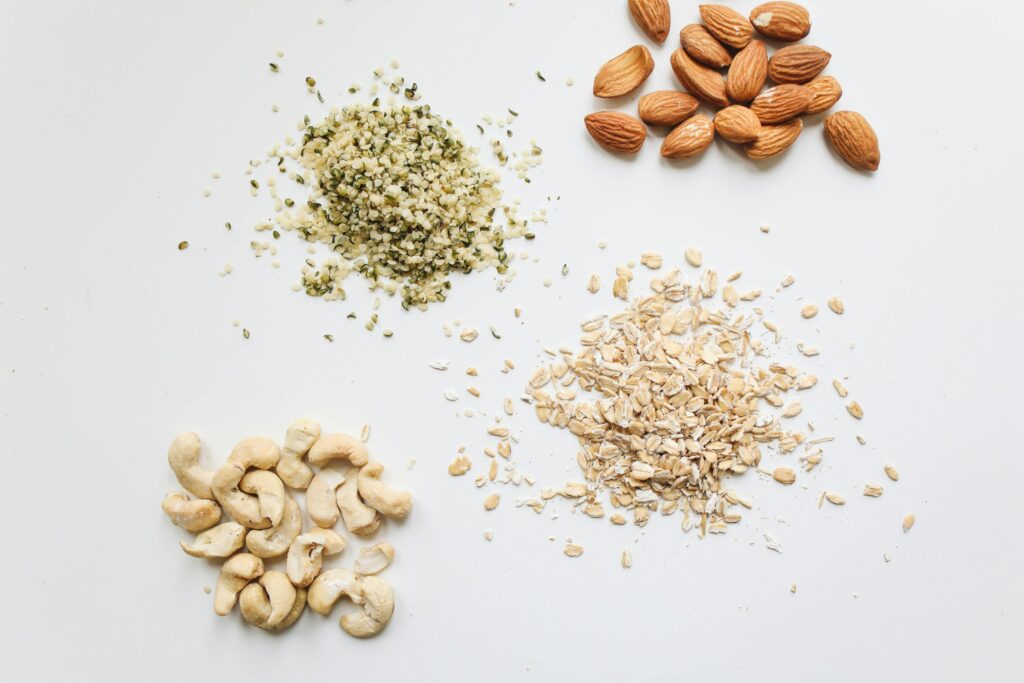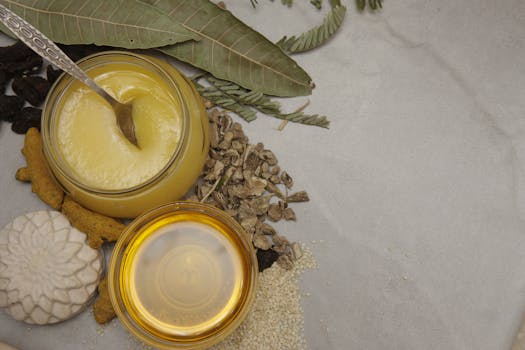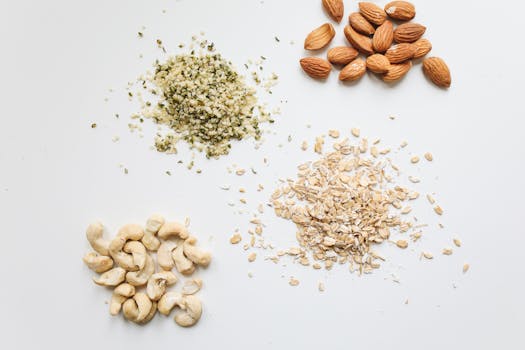Talbeena: A Timeless Superfood Bridging Prophetic Wisdom and Modern Nutrition Science
In a world increasingly captivated by “superfoods,” few can claim the spiritual, historical, and nutritional credentials that Talbeena holds. Mentioned in the sacred traditions of Prophet Muhammad (peace be upon him), Talbeena is a simple barley-based porridge with profound health benefits. From soothing grief-stricken hearts to promoting gut and cardiovascular health, Talbeena stands at the crossroads of Islamic heritage and modern dietary science.
This comprehensive article explores Talbeena’s origins in Prophetic medicine, its nutritional composition, scientific validation of its health benefits, and practical ways to incorporate it into modern diets. Whether you are a health-conscious individual, a seeker of Sunnah-based nutrition, or simply curious about natural remedies, Talbeena offers a nourishing bridge between tradition and science.

1. Talbeena in Islamic Tradition: Food for the Body and Soul
Talbeena is derived from the Arabic word “laban” (milk), referring to its milky consistency when prepared. It is traditionally made by cooking barley flour with water or milk and sweetening it with honey or dates.
Hadith Evidence
Talbeena is more than a traditional dish; it is a food recommended by the Prophet Muhammad (PBUH) himself. Several hadith highlight its spiritual and physiological benefits:
“The Talbeena gives rest to the heart of the patient and makes it active and relieves some of his sorrow and grief.”
— Sahih al-Bukhari, Hadith 5417
This narration suggests that Talbeena is not only nutritionally nourishing but emotionally soothing. In another narration:
“I heard Aisha (RA) say: ‘If any of the Prophet’s family became ill, the Talbeena would be prepared, and then he would order them to eat it. He said, “It soothes the grieving heart and cleanses the ailing heart just as one of you cleanses her face of dirt with water.”’”
— Ibn Majah, Hadith 3445
These narrations clearly point to Talbeena’s central role in Prophetic healing practices, particularly for those experiencing emotional distress, grief, or physical weakness.
2. Nutritional Composition of Talbeena
At the heart of Talbeena is barley (Hordeum vulgare), a cereal grain that has been a staple food for millennia. When made into Talbeena, the combination of barley flour, milk, and honey creates a nutrient-dense, easy-to-digest porridge packed with vital compounds.
Key Nutrients in Talbeena
| Nutrient | Function |
|---|---|
| Beta-Glucans | Soluble fiber that lowers cholesterol and improves gut health. |
| B Vitamins (especially B1, B3, B6) | Vital for energy metabolism and nervous system health. |
| Iron | Supports oxygen transport in blood. |
| Magnesium | Regulates muscle function, nerve transmission, and blood sugar levels. |
| Zinc | Essential for immunity and wound healing. |
| Selenium | Antioxidant that protects against cell damage. |
| Phosphorus | Important for bone health and energy production. |
| Antioxidants (including lignans and polyphenols) | Reduce oxidative stress and inflammation. |
Barley also has a low glycemic index, meaning it doesn’t spike blood sugar levels — a benefit particularly useful for people with diabetes.
3. Modern Scientific Validation of Talbeena’s Benefits
Many of the health benefits attributed to Talbeena in the Hadith literature are now supported by contemporary scientific research, particularly focused on barley and its constituents.
A. Heart Health
The beta-glucans in barley are known for their ability to reduce LDL (“bad”) cholesterol and improve heart function.
“Barley β-glucan has been recognized for its capacity to reduce serum cholesterol and low-density lipoprotein (LDL) cholesterol.”
— Keenan JM et al., Nutrition Reviews, 2007
A meta-analysis found that consuming 3 grams of barley beta-glucan per day significantly reduced total and LDL cholesterol levels — a finding consistent with cardiovascular benefits mentioned indirectly in the hadith.
B. Emotional Well-being and Mental Health
Although ancient hadith focus on grief and sorrow, modern science has begun to uncover the gut-brain connection — a field that validates the prophetic emphasis on Talbeena for emotional wellness.
“Dietary fibers such as beta-glucans influence the gut microbiota, which can have downstream effects on mental health.”
— Cryan JF et al., Nature Reviews Neuroscience, 2019
Barley promotes the growth of beneficial gut bacteria, which produce short-chain fatty acids (SCFAs) that play a role in mood regulation, thereby providing a biological basis for Talbeena’s mood-soothing effects.
C. Digestive Wellness
Barley is an excellent source of both soluble and insoluble fiber. These fibers improve digestion by:
- Promoting regular bowel movements
- Supporting gut microbiota
- Preventing constipation
- Reducing inflammation in the colon
“Regular intake of barley enhances colonic fermentation, improves stool consistency, and contributes to overall colon health.”
— Behall KM et al., Journal of the American Dietetic Association, 2004
D. Blood Sugar Regulation
Talbeena, when made with whole barley flour and no refined sugars, has a low glycemic index, which slows glucose absorption and supports healthy insulin function.
“Consumption of barley beta-glucans reduces postprandial glucose and insulin responses.”
— FDA Health Claim for Barley Beta-Glucan, 2006
4. Talbeena in Contemporary Wellness and Diets
Despite its ancient origins, Talbeena fits seamlessly into modern dietary regimens including:
- Whole-food plant-based diets
- Low-glycemic index plans
- Sunnah-based nutrition
- Heart-healthy diets
- Anti-inflammatory and gut-healing protocols
How to Prepare Traditional Talbeena
Basic Ingredients:
- 2 tablespoons of barley flour
- 1 cup of milk or water (or a mix)
- 1 teaspoon of honey (optional)
Instructions:
- Mix the barley flour with a little cold water to form a smooth paste.
- Bring the milk to a gentle simmer, then add the paste.
- Stir continuously for 5–7 minutes until thickened.
- Add honey or date syrup to sweeten naturally.
Modern Variations of Talbeena
To adapt Talbeena to modern tastes and nutritional needs, consider the following additions:
- For protein boost: Add a scoop of whey or plant-based protein powder.
- For fiber and texture: Top with chia seeds, flaxseeds, or oats.
- For antioxidants: Add berries or a sprinkle of cinnamon and turmeric.
- For healthy fats: Stir in almond butter or a dash of coconut milk.
These adaptations allow you to personalize Talbeena for children, athletes, the elders, or anyone recovering from illness.
5. Spiritual and Holistic Health through Talbeena
The prophetic use of Talbeena reveals a deep understanding of food’s spiritual and emotional dimensions — aspects often overlooked in clinical nutrition. When Aisha (RA) spoke of Talbeena as healing the heart, it wasn’t only metaphorical. The holistic approach of Islam sees body and soul as interconnected. Modern science, through fields like psychoneuroimmunology and nutritional psychiatry, is only now beginning to explore these links.
When you consume Talbeena with the intention of following a Sunnah and improving your health, it becomes more than just a meal — it becomes an act of ibadah (worship).
Conclusion: Reviving a Sunnah for Modern Well-being
Talbeena represents the best of both worlds: a healing tradition rooted in prophetic wisdom and a scientifically validated superfood. It’s simple to make, versatile, and accessible — and it offers physical, emotional, and spiritual nourishment.
As Muslims strive to follow the Sunnah in all aspects of life, incorporating Talbeena into one’s diet is a meaningful way to align with prophetic practices while embracing evidence-based nutrition.
Whether you’re facing emotional distress, recovering from illness, or simply looking for a wholesome, Sunnah-inspired breakfast, Talbeena is a timeless gift waiting to be rediscovered.
References
- Keenan JM, Goulson M, Shamliyan T, Knutson N, Kolberg L, Curry L. The effects of concentrated barley beta-glucan on blood lipids in a population of hypercholesterolemic. Nutrition Reviews. 2007.
- Cryan JF, O’Riordan KJ, Cowan CSM, et al. The microbiota-gut-brain axis. Nature Reviews Neuroscience. 2019;20:453–466.
- Behall KM, Scholfield DJ, Hallfrisch J. Diets containing barley significantly reduce lipids in mildly hypercholesterolemic. J Am Diet Assoc. 2004.
- U.S. Food & Drug Administration. Health Claim Notification for Barley Beta Fiber and Coronary Heart Disease. 2006.
- Al-Bukhari, Sahih al-Bukhari, Hadith 5417.
- Ibn Majah, Sunan Ibn Majah, Hadith 3445.
If you’re ready to bring the Sunnah into your kitchen and into your health journey, start with a warm bowl of Talbeena — food for your body, balm for your soul.
Author’s Note: This article is a synthesis of traditional Islamic scholarship and modern nutritional science, reviewed by a certified nutritionist and a qualified student of Islamic knowledge. Always consult your healthcare provider for individual dietary needs.


